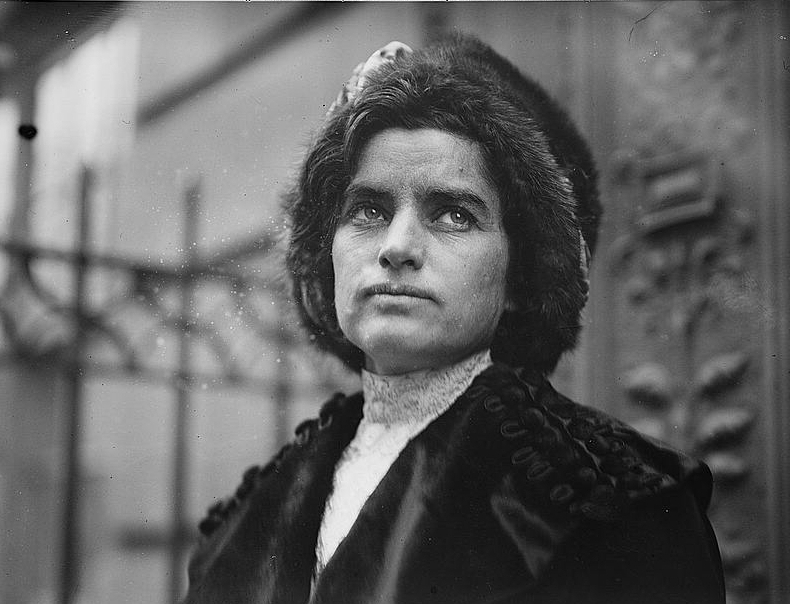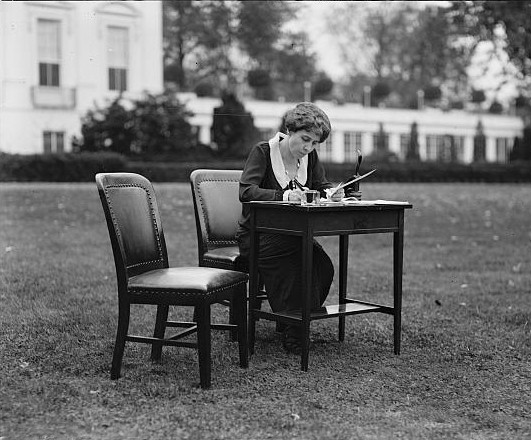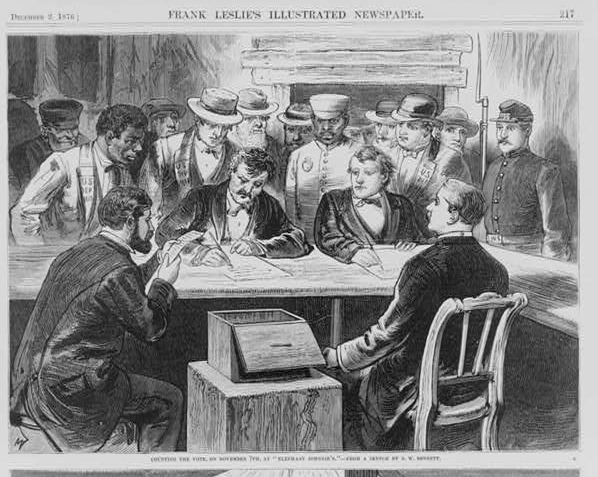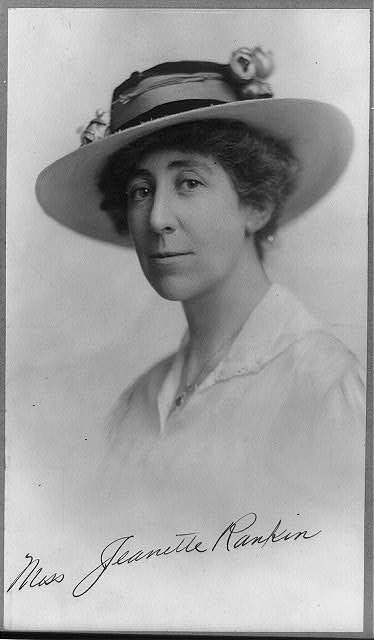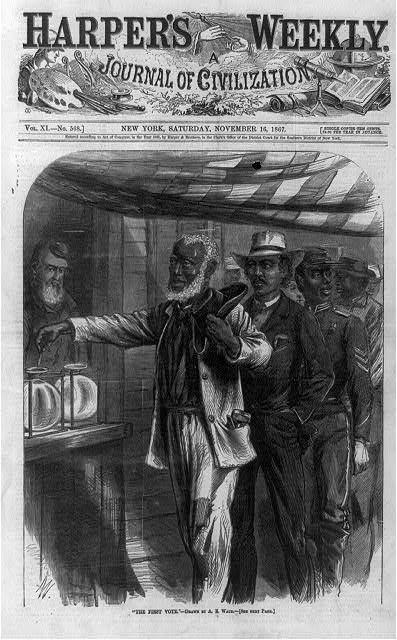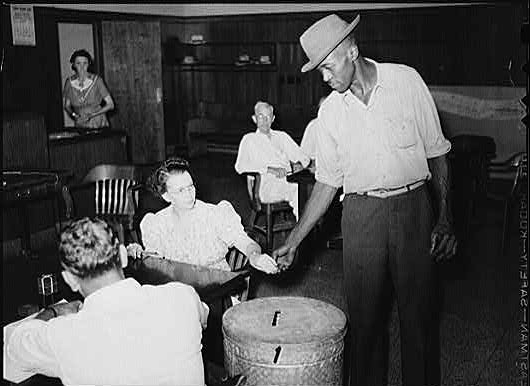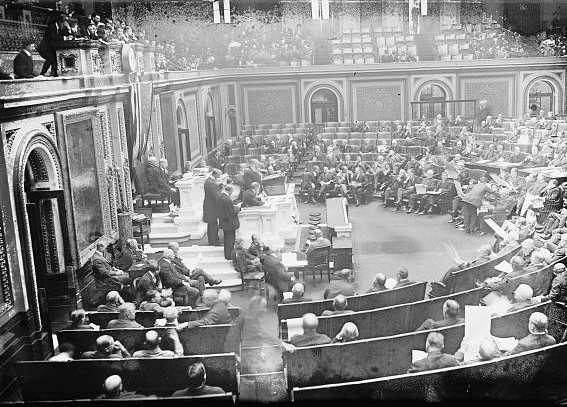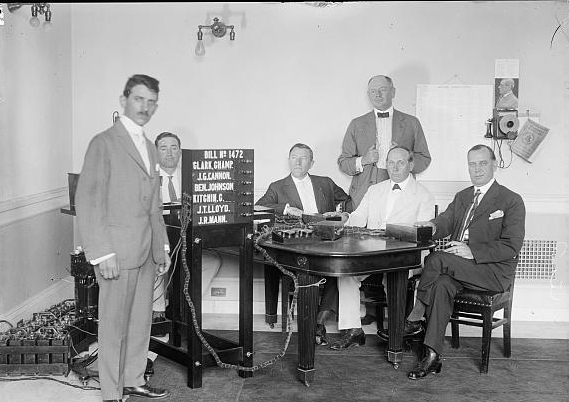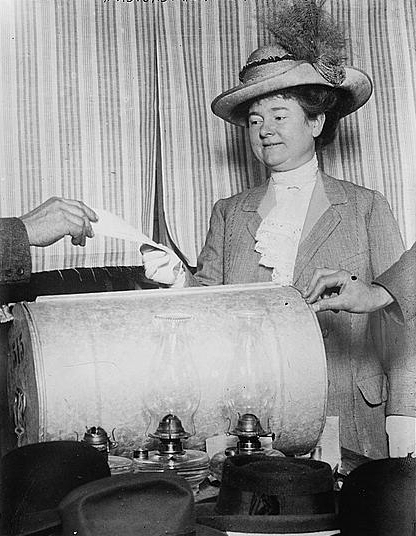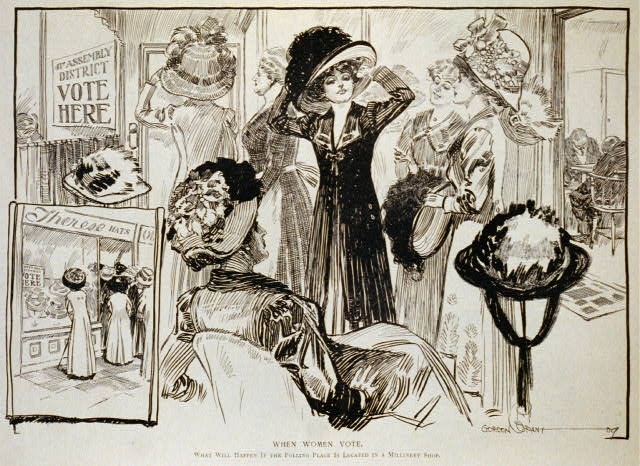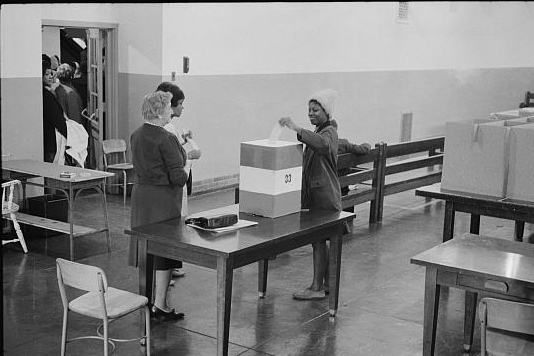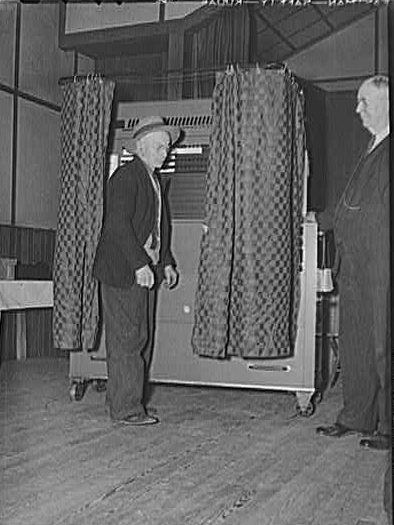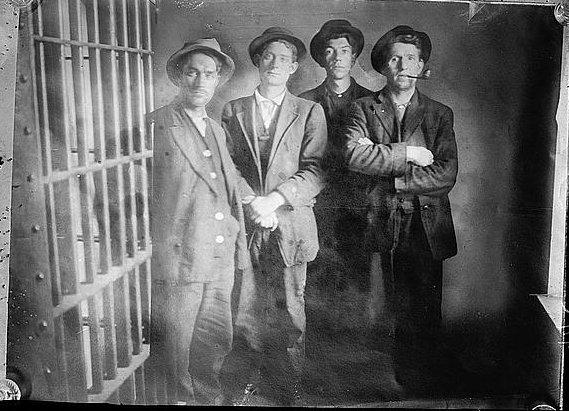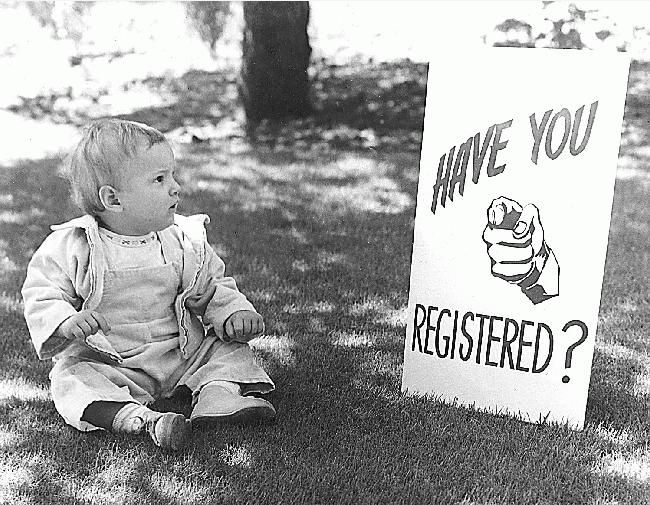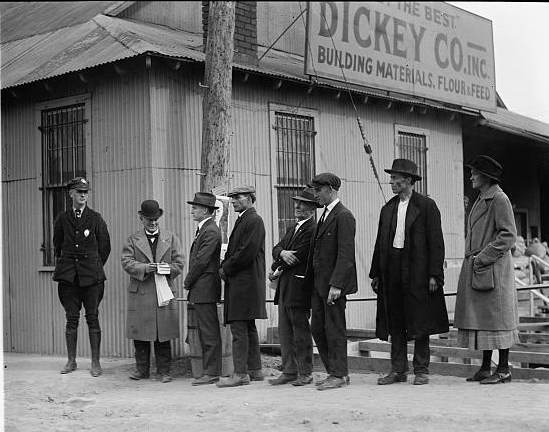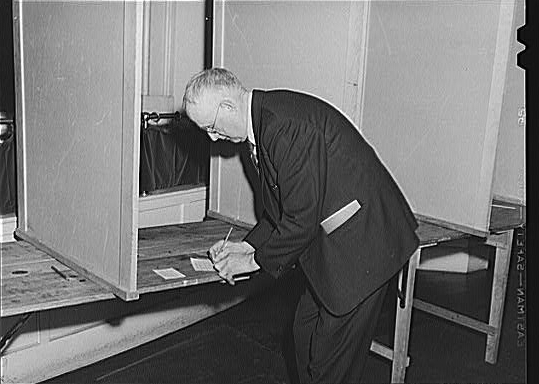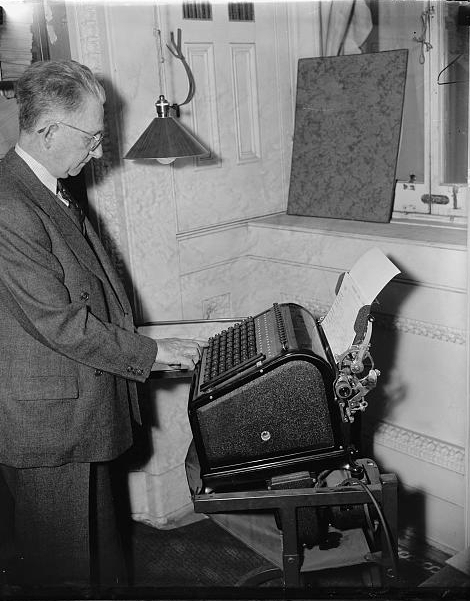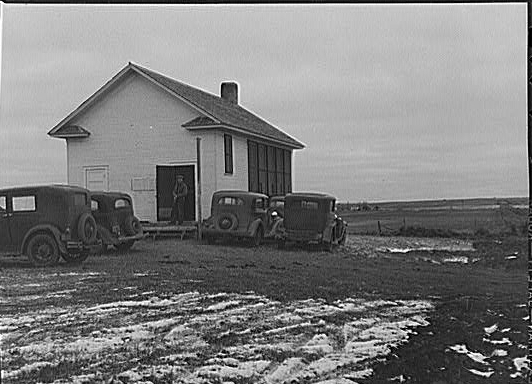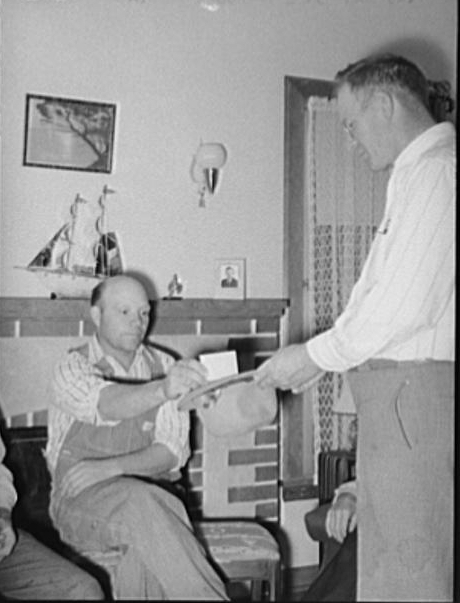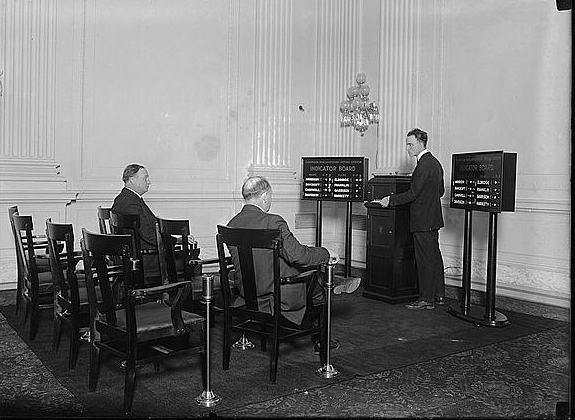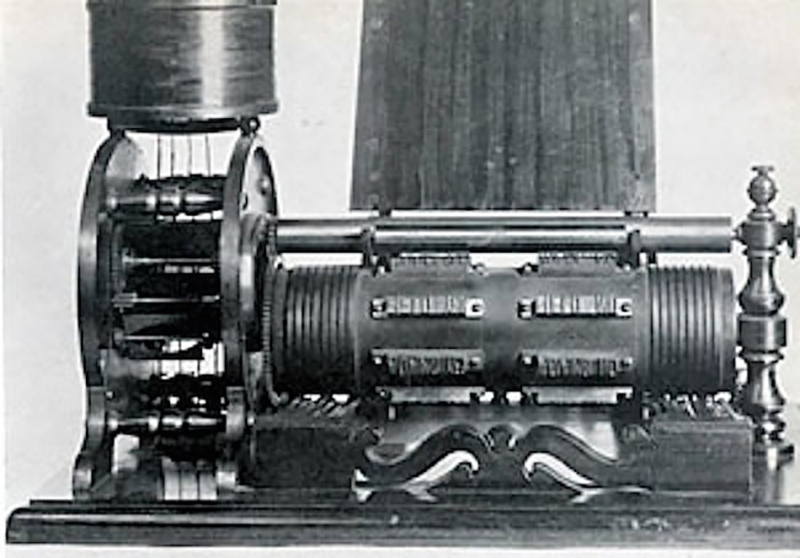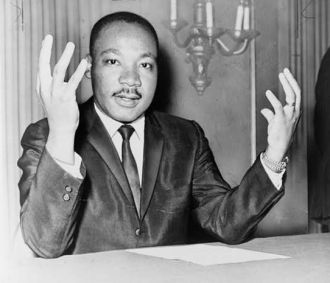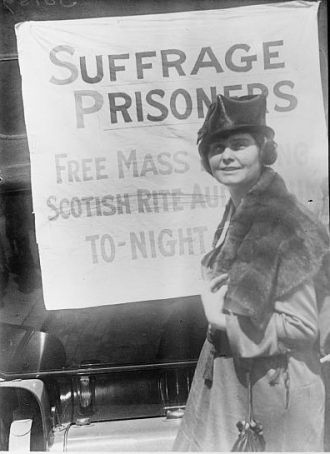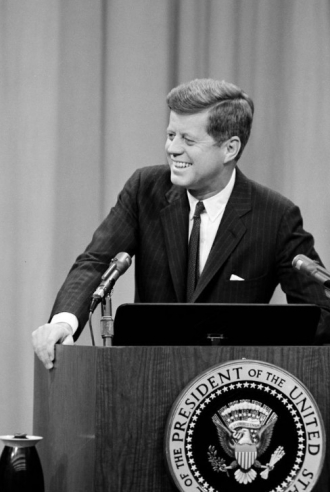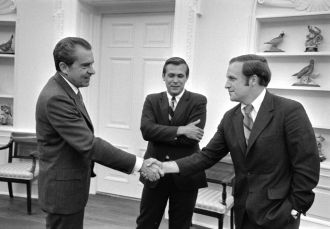
Kate Bernard, 1915
 Kathy Pinna
Kathy Pinna A member of the Democratic party, Kate Bernard was elected in 1907 to the Oklahoma Commissioner of Charities and Corrections - the only statewide office that a woman could hold at the time (this was before women could vote). While she was elected to two terms, her office was defunded when she began to advocate on the behalf of Native Americans and her second term was ended prematurely. Almost 80 years later, she was inducted into the Oklahoma Women's Hall of Fame.
Mrs Coolidge Votes by Mail
 AncientFaces
AncientFaces On October 30, 1924, the wife of President Calvin Coolidge sat in the garden of the White House and filled in her mail-in ballot. Mail in voting was added to the Constitution in 1864 (Article XIII of the Amendments to the 1818 Constitution) to allow Civil War soldiers to vote by absentee ballot.
Wood Engraving of "Counting the Vote", 1876
 AncientFaces
AncientFaces This picture of men counting the vote was published in the December version of Frank Leslie's illustrated newspaper. Notes of interest? Only men are pictured (because only men could vote) and the ballot box is an actual wooden box!
Jeannette Rankin, 1916
 AncientFaces
AncientFaces Jeanette Pickering Rankin was elected to the U.S. House of Representatives as a Republican from Montana in 1916 and again in 1940. She was the first woman to hold a federal office in the US (and the last - to date - woman to be elected to Congress from Montana). Maybe that will change?
Harper's Weekly. 1876
 AncientFaces
AncientFaces In 1870, the Fifteenth Amendment to the US Constitution prevented states from denying the right to vote on the grounds of "race, color, or previous condition of servitude".
Unfortunately, the former Confederate states passed Jim Crow laws and amendments in order to disfranchise black and poor white voters. They used poll taxes, literacy tests, grandfather clauses and other restrictions, applied in a discriminatory manner.
Dunklin County, Missouri
 AncientFaces
AncientFaces An African-American man voting in the primary election in MO, 1942
Electoral Voting, Washington DC
 AncientFaces
AncientFaces Counting the electoral vote, U.S. Capitol, Washington, D.C in April 1917
Bobroff Voting Machine
 AncientFaces
AncientFaces This is a photo of the BOBROFF VOTING MACHINE being considered for use by the House of Representatives in 1917.
President Taft Voting
 AncientFaces
AncientFaces A photo of President Taft voting circa 1915. Does he look more interested in the camera than the ballot?
Annie Marshall Reid Rolph
 AncientFaces
AncientFaces The wife of the Mayor of San Francisco voting in the election. California gave women the vote in 1911 - 9 years before the Federal government did.
Caricature of What Would Happen if Women Voted
 AncientFaces
AncientFaces In 1909, Puck Magazine ran a picture of what would happen if women could vote: They would go out to cast their ballot and be distracted by such "meaningless" things as buying a new hat.
1964 Washington DC
 AncientFaces
AncientFaces In this photo of the 1964 Presidential election, a young African-American woman is voting. Some places were beginning to make it easier for minorities to vote.
1944 Maryland
 AncientFaces
AncientFaces In the 1944 general election in Maryland, this photo shows a man casting his vote. Interesting voting booth - the curtain is pulled around his body?
Men Selling Votes
 AncientFaces
AncientFaces In this undated photo - perhaps the 1920s? - four men were arrested on suspicion of selling votes. Luckily, this rarely happens today.
1952 - Being brought up on Patriotism
Is this a form of "brainwashing"? If so, this baby grew up to always exercise his patriotic duty!
1924 Presidential Election
 AncientFaces
AncientFaces Lined up to vote in the 1924 election, it looks like only one woman decided to vote. Lines look quite different today, almost 100 years later.
Local election, 1940s
 AncientFaces
AncientFaces Casting a paper ballot in the 1940s. The first paper ballot is thought to have been cast in Rome circa 139 BCE.
Voting Machine for the House of Representative
 AncientFaces
AncientFaces Similar to an adding machine, this voting machine did the same job in less than two weeks - when it used to take more than 3 months. Greater accuracy was assured in counting votes with the Jurgensen-designed machine.
1940 Voting
 AncientFaces
AncientFaces In 1940 North Dakota, there are only 4 cars at the schoolhouse. But based on the landscape, they had to drive a far ways to vote.
1940 Utah
 AncientFaces
AncientFaces These farmers are voting for "the caretaker of the stallion" at an FSA meeting in 1940. Who knows what the caretaker of the stallion is?
Voting Machines was BIG BUSINESS in 1922
 AncientFaces
AncientFaces So many voting machines! It seems like everyone and anyone, in a variety of venues, was trying to invent a new voting machine in the 20th century. Everyone wanted to make it easier to vote and quicker to tally the results.
Thomas Edison's 1869 voting machine
 Kathy Pinna
Kathy Pinna Since politicians often used a slow vote to delay or halt the progress of a new piece of legislation, Edison's invention for the House of Representatives was kiboshed. It was his first patent and the lack of success didn't deter him. He did, however, vow to “Never waste time inventing things that people would not want to buy.”
Have photos that you'd like to see included? Share your photos or see photos showing the story of the fight for women's suffrage by clicking "next page" below.

